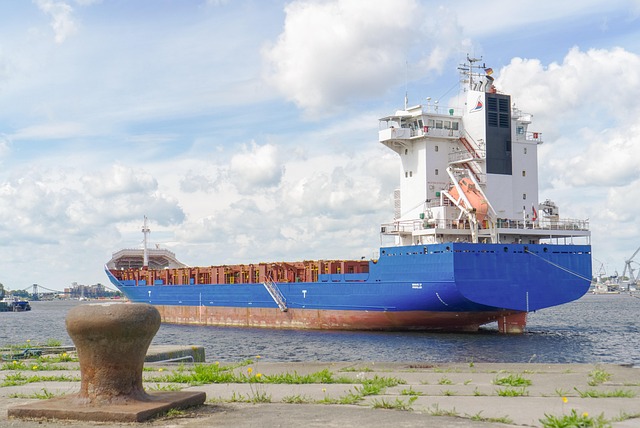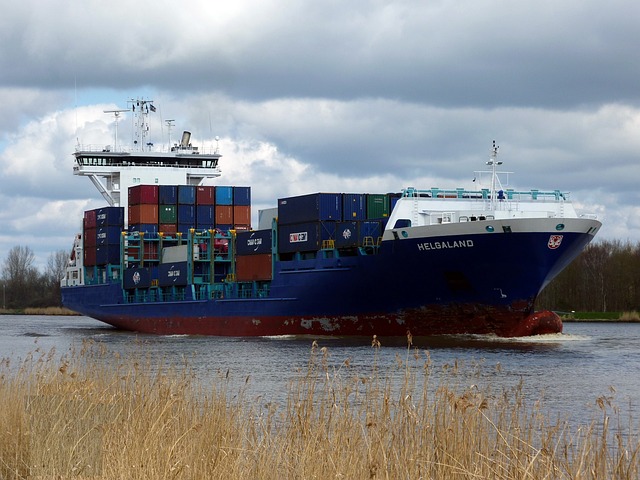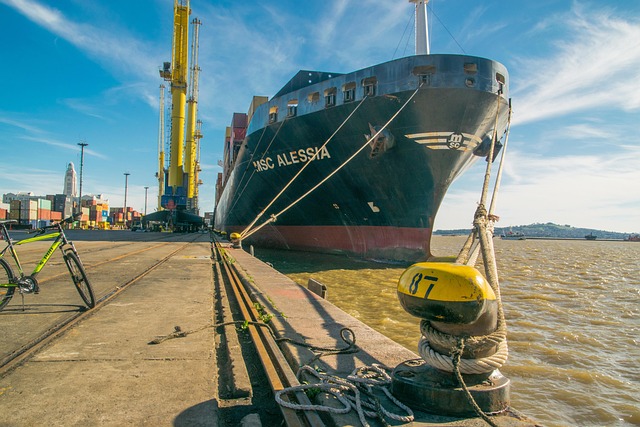Understanding standard shipping container sizes (20ft, 40ft) and variants (high cube, refrigerated, etc.) is crucial for efficient logistics planning. Key dimensions: 12.19m x 2.44m x 2.59m. 40ft containers offer ~38 sq m interior space, ideal for diverse cargo types and global compatibility due to ISO standards. High cube variants provide increased vertical space for optimized stacking and maximized usable volume.
Discover the versatile 40ft shipping container, a ubiquitous standard in global logistics. With dimensions of exactly 12.19 meters in length, this container size offers optimal space for diverse cargo. In this comprehensive guide, we demystify shipping container sizes, delve into the specifics of the 40ft unit, and explore its applications across industries. Understand why this metric length is a game-changer for efficient freight transport and storage solutions.
- Understanding Standard Shipping Container Sizes
- What is a 40ft Shipping Container?
- Dimensions of a 12.19m Long Container
- Comparison with Other Container Lengths
- Applications and Benefits of 40ft Containers
Understanding Standard Shipping Container Sizes

Shipping containers come in a variety of sizes, each with its own unique dimensions and uses. Understanding standard shipping container sizes is crucial when planning logistics and cargo transportation. The most common standards include the 20ft and 40ft shipping container sizes, both of which are measured by their exterior length, width, and height.
The interior size of a shipping container may vary slightly from its exterior dimensions due to components like the door, frame, and corner posts. For instance, a standard 40ft shipping container has an exterior length of 40 feet (12.19m), width of approximately 8 feet (2.44m), and height of around 8.5 feet (2.59m). Similarly, the 20ft shipping container size offers a more compact footprint with dimensions of about 20 feet (6.10m) in length, 8 feet (2.44m) in width, and slightly less than 8.5 feet (2.59m) in height. Additionally, there are specialized containers like high cube shipping containers, refrigerated containers, flat rack containers, open top containers, and modular containers, each tailored to specific cargo requirements.
What is a 40ft Shipping Container?

A 40-foot shipping container is a standard, intermodal transport unit defined by its dimensions as measured in length, width, and height. It’s part of a larger category of containers known for their versatility and efficiency in global logistics. With a length of 12.19 meters (40 feet), this specific size offers substantial interior floor space—typically around 38 square meters—and can accommodate various cargo types. The term “high cube” often refers to variations of this standard container, indicating an enhanced height that allows for optimized stacking and more usable interior volume compared to a standard, “dry” container.
The 40ft shipping container size is just one of many options available in the market, ranging from smaller sizes like the 20ft container to larger ones like the 45ft container. Each variant caters to different cargo needs and transportation requirements, with some designed for specific purposes such as refrigerated transport (refrigerated containers), open-topped goods (open top containers), or flat-rack freight (flat rack containers). Understanding these dimensions and their corresponding sizes is crucial for businesses engaged in international trade and logistics, ensuring the right container is selected to fit cargo and transportation requirements.
Dimensions of a 12.19m Long Container

A 12.19m long shipping container is a significant step up from smaller sizes like the popular 20ft and 40ft varieties, offering both increased capacity and versatility for various shipping needs. This larger vessel, often referred to as a high cube container, measures approximately 40 feet (or 12.19 meters) in length, providing a substantial interior space of around 38 cubic meters (depending on the exact model).
The dimensions of this massive structure are not just about length; it also boasts a standard width of 2.44 meters and a height of 2.74 meters (or 9 feet 6 inches) at the top, allowing for the accommodation of diverse cargo types. The shipping container’s exterior size is designed to conform to ISO standards, ensuring compatibility across global shipping networks. Its door size, typically around 3.05 meters wide and 2.67 meters high, facilitates easy loading and unloading operations. Moreover, the interior floor space, optimized for maximum efficiency, offers a usable area of approximately 19 square meters, making it suitable for both standard and specialized cargoes, including refrigerated, flat rack, open top, and modular containers.
Comparison with Other Container Lengths

When comparing the 40ft shipping container size (12.19m long) to other standard options, it stands out as a versatile and spacious choice. While the 20ft shipping container size (6.1m) is more compact and suitable for smaller loads or tight spaces, the 40ft container offers nearly three times the interior floor space, making it ideal for larger freight or multiple palletized goods. The high cube variant of both sizes (e.g., 20ft high cube container size and 40ft high cube container size) provides additional headroom, which can be beneficial when handling bulky items that require more vertical clearance.
A comprehensive shipping container size chart or guide will reveal the precise dimensions and available options, including narrow and wide containers (e.g., 8ft shipping container size and 10ft shipping container size), refrigerated containers for temperature-controlled transport, flat rack containers for odd-shaped cargo, open top containers for bulk materials, modular containers for customizable configurations, and even custom container sizes tailored to specific project needs. The ISO shipping container size (a widely accepted standard) aligns with the dimensions of the 40ft container, ensuring compatibility across global supply chains, while the metric shipping container size offers a straightforward reference point in the international market.
Applications and Benefits of 40ft Containers

The 40ft shipping container size has become an industry standard, offering a range of applications and benefits that cater to diverse logistics needs. Its spacious interior, measured at approximately 12.19m in length (or 40 feet), provides ample room for various cargo types, from palletized goods to heavy machinery. This versatile size is particularly advantageous for bulk shipping, construction sites, and temporary storage solutions due to its ability to accommodate large volumes efficiently.
The benefits extend beyond space; the standard ISO dimensions ensure compatibility across global supply chains, streamlining logistics processes. Additionally, high cube variants, such as the 20ft and 40ft high cube containers, offer increased vertical height, ideal for stacking and maximizing usable floor space. These versatile shipping container sizes have revolutionized international trade, facilitating the transport of goods with minimal waste, making them an eco-friendly choice in the logistics sector.
In summary, the 40ft shipping container, measuring precisely 12.19 meters in length, stands as a versatile and efficient standard in global logistics. Its dimensions offer optimal space for diverse cargo while facilitating seamless transport across various modes. Understanding these standard shipping container sizes empowers businesses to make informed decisions, leveraging the unique applications and benefits of containers like these to streamline their supply chain operations effectively.
